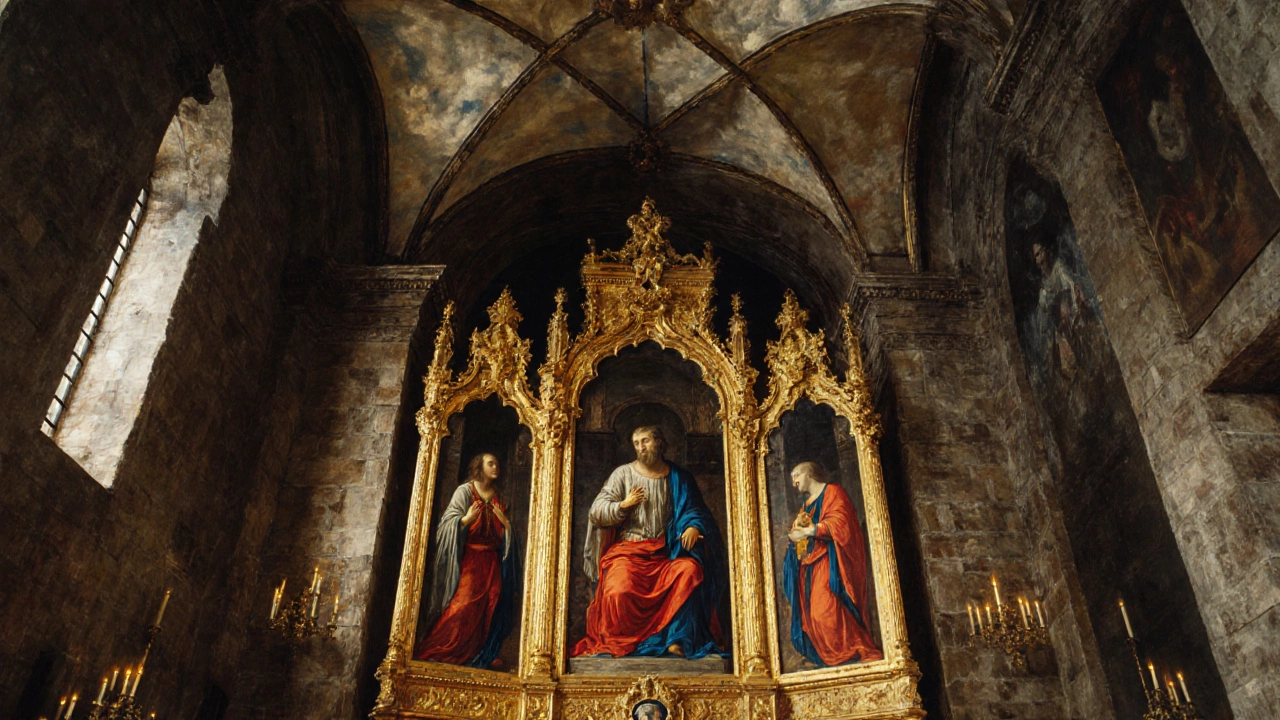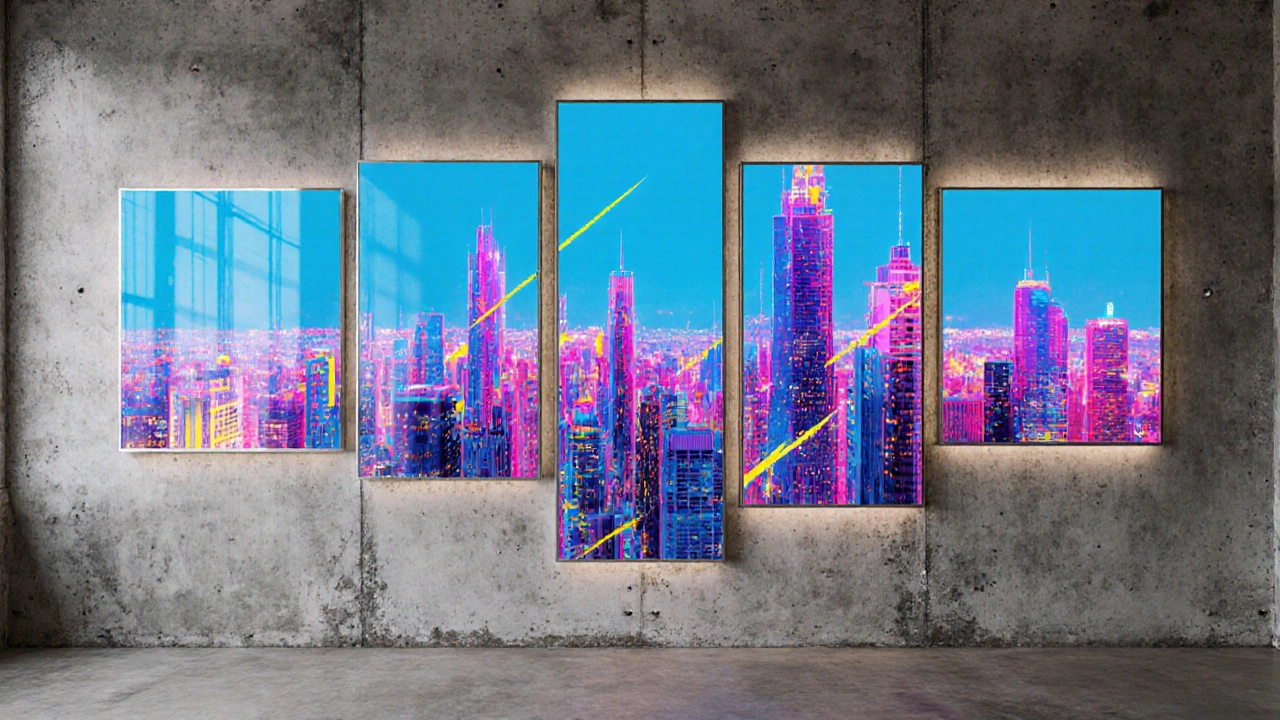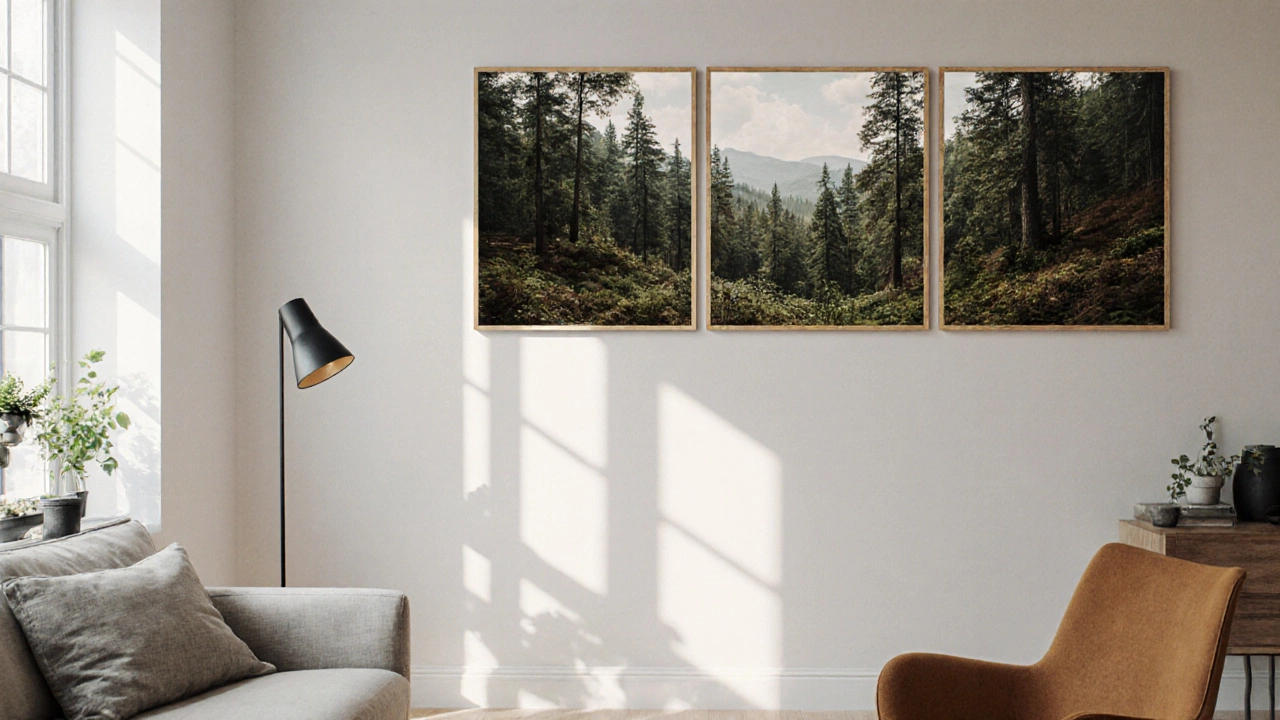Polyptych Wall Space Calculator
Calculate Your Ideal Polyptych Layout
Input your wall dimensions to determine optimal panel size and spacing based on Renaissance-era spacing guidelines.
Ever walked into a room and noticed a set of panels that together form a single, striking image? That’s a polyptych - a multi‑panel artwork that turns a blank wall into a visual story.
What Exactly Is a Polyptych?
Polyptych is a type of artwork composed of three or more panels that are designed to be displayed together as a cohesive piece. Historically it served religious purposes, but today it’s a favorite way to add depth and personality to any interior.
From Altarpieces to Modern Living Rooms: A Brief History
The roots of the polyptych stretch back to the Renaissance era, when churches commissioned massive altarpieces to tell biblical stories across several panels.
During the Baroque period, artists added dramatic lighting and richer colors, making the multi‑panel format even more immersive.
By the 19th and 20th centuries, painters like Hieronymus Bosch used polyptychs for fantastical, narrative scenes, while modernists began experimenting with abstraction and non‑religious themes.
How a Polyptych Differs From a Diptych or Triptych
Many people confuse polyptychs with diptychs (two panels) and triptychs (three panels). Here’s a quick visual comparison:
| Format | Number of Panels | Typical Use |
|---|---|---|
| Diptych | 2 | Portraits, paired landscapes |
| Triptych | 3 | Altarpieces, narrative sequences |
| Polyptych | 4 or more | Large-scale storytelling, modern décor |
Famous Polyptychs Worth Knowing
- Altarpiece of the Holy Trinity by Masaccio - a 15th‑century masterpiece that still dominates its chapel wall.
- Los Fridos by Frida Kahlo - a series of six panels that blend personal pain with Mexican folklore.
- Megastructures - a contemporary digital‑print polyptych installation that uses neon lighting to explore urban growth.

Choosing the Right Polyptych for Your Space
- Assess the wall dimensions. Measure the total width and height you can dedicate. A common rule is to leave at least 6‑12 inches of breathing room on each side.
- Pick a theme that matches your room’s vibe. For a cozy bedroom, nature‑based scenes work well; for a sleek office, abstract geometry brings energy.
- Consider the art style. If your décor leans Contemporary art, choose bold colors and mixed media. For traditional homes, classic Renaissance or Baroque motifs create continuity.
- Check the frame material. Wood frames add warmth, while metal frames contribute a modern edge.
- Think about lighting. Spotlights or ambient wall washers can highlight details and prevent glare.
Installation Tips - From Layout to Hanging
Getting a polyptych to look flawless isn’t magic; it’s planning.
- Lay out the panels on the floor first. Ensure the sequence flows naturally and that any narrative elements align.
- Mark the center point on the wall. Use a laser level to keep the top edge even.
- Use proper hardware. For heavier panels, opt for wall anchors and sturdy picture hooks rated for the combined weight.
- Leave a small gap (about 1-2 inches) between panels. This prevents visual crowding and makes each panel stand out.
- Protect the edges. Apply clear UV‑protective glass or acrylic to guard against sun damage.
Caring for Your Polyptych
Unlike single‑canvas prints, polyptychs have seams that can collect dust.
- Dust with a soft microfiber cloth, never a feather duster that can snag canvas fibers.
- Maintain stable humidity (around 45‑55%). Fluctuations cause canvas tension to shift, warping the panels.
- Avoid direct sunlight; UV rays fade pigments over time, especially in bright living rooms.
- If you need a deep clean, consult a professional conservator who can remove grime without harming the paint.

Modern Trends: Digital and DIY Polyptychs
Today, artists experiment with digital printing on acrylic, creating ultra‑sharp polyptychs that can be backlit. DIY enthusiasts also split a favorite photograph into several panels using free online tools, then frame each piece for a personalized gallery wall.
Quick Checklist Before You Buy
- Measure the wall space accurately.
- Decide on a narrative or abstract theme.
- Choose frame material that complements existing furniture.
- Verify the artwork’s weight and required mounting hardware.
- Check for UV‑protective glazing.
- Plan lighting to enhance, not wash out, colours.
Frequently Asked Questions
Can I create a polyptych from a single painting?
Yes. Artists often slice a larger image into equal sections, then frame each piece separately. The key is to keep the cuts clean and maintain the visual flow across panels.
What’s the ideal height for a polytych in a living room?
A good rule of thumb is to hang the centre of the polyptych at eye level - roughly 57‑60 inches from the floor. Adjust for ceiling height and furniture placement.
How do I prevent gaps between panels from getting dusty?
Use a tight‑fit frame and keep the wall area clean. A light‑mist spray on a soft cloth can remove dust without scratching the surface.
Is a polyptych suitable for a small apartment?
Absolutely, as long as you choose a modest number of panels and keep the overall footprint modest. A three‑panel piece (triptych style) works well in tighter spaces.
Do I need professional installation?
If the panels are lightweight and you have the right hardware, DIY is doable. For heavy, large‑scale works, hiring a professional ensures safety and alignment.


